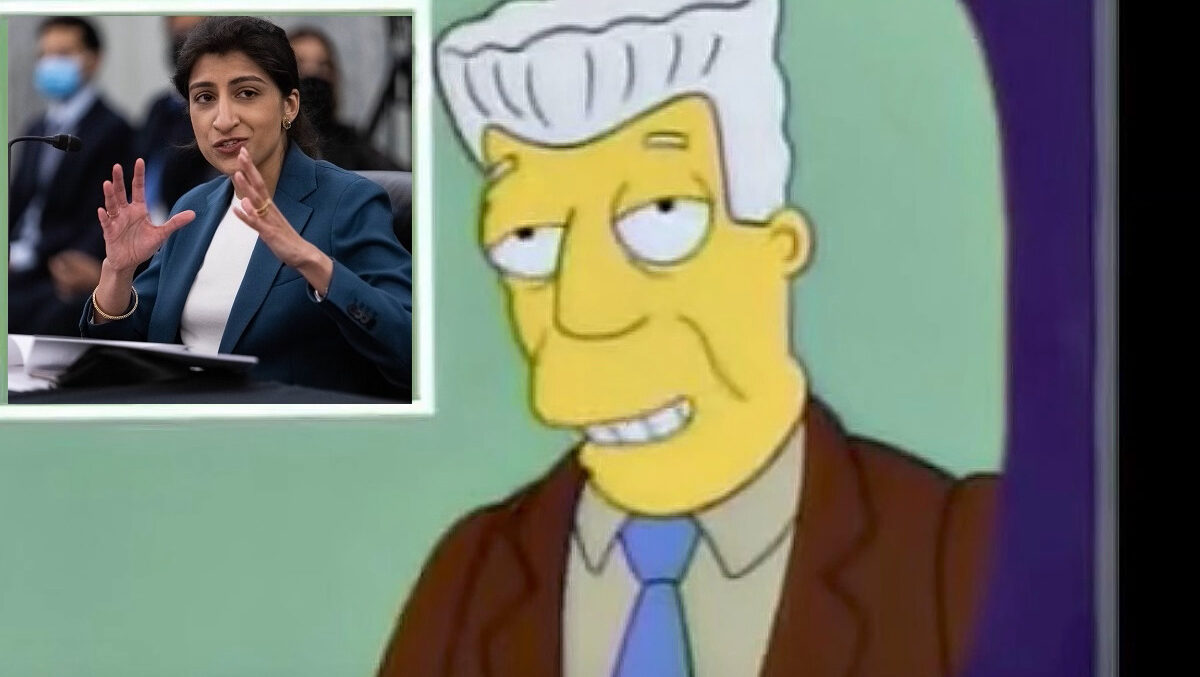
This article is a part of the The FTC's New Normal symposium.

In this post—the last planned post for this symposium on The FTC’s New Normal (though we will continue to accept unsolicited submissions of responses)—I will offer some summary of the ideas that have been shared here over the past month, before turning to some of my own thoughts. To keep your attention rapt, I will preview that my thoughts will live up to the title of this post: I will sing some sincere praise for the Federal Trade Commission (FTC) and U.S. Justice Department’s (DOJ) honesty and newfound litigiousness.
But before we get there, let’s look at where we have been.
The prompt for this symposium invited participants to discuss how the FTC has changed during the course of the Biden administration and what those changes mean for antitrust law and consumer-protection policy. Contributions have considered these changes from various perspectives.
In a pair of posts early in the symposium, Tad Lipsky did yeoman’s work offering historical perspective on the FTC and the development of the neo-Brandeisian movement. His first post traced the development of the agency and antitrust law from its founding in 1912 until the beginnings of the neo-Brandeisian movement. He then offered a detailed account of the origins and subsequent initiatives of the movement, contextualizing them relative to pivotal moments in the course of antitrust law seen in the first post.
Alden Abbott, Susan Dudley, and Mary Sullivan all discussed changes at the agencies alongside changes in other institutions. Alden focused on the role that the International Competition Network (ICN) played in leading a global “soft convergence” around American antitrust norms over the past two decades—and the subsequent inversion of that role over the past two years, with the FTC leading a global retreat from the consumer welfare standard. Keeping the focus domestic, Dudley & Sullivan compared changes at the antitrust agencies to changes at the Office of Management and Budget (OMB)–looking at the draft merger guidelines, alongside revisions to Circular A-4. They argue that the Biden administration’s “draft revisions to its merger and regulatory analysis guidelines both appear designed to tilt analysis to achieve this administration’s policy preferences,” marking a shift to an “’entirely new regulatory philosophy, one that is unwilling to sacrifice widely shared values like dignity and equity for brutal, cold, calculating efficiency.’”
Joe Sims echoes this concern, discussing the “serious divide between the historical bipartisan consensus view—that antitrust is a law-enforcement mechanism used to deter or correct various kinds of impediments to competition—and the apparent perspective of the current FTC and Antitrust Division leadership.” He finds that “their speeches and actions suggest they see antitrust as simply another in the myriad of regulatory tools that can and should be used to promote a particular set of industrial and social policies.”
How does so much change happen so quickly? Dan Gilman goes through the symptoms of withdrawal for us, charting the path through the FTC’s withdrawal of the UMC policy statement, its statement on prior approval of mergers, the vertical merger guidelines, and a series of policy statements relating to antitrust enforcement in the health-care setting. It turns out that “first thing we do is, let’s kill all the law[s]” is a first step to putting new ones in place.
Dan also discussed his own withdrawal from the ranks of FTC staff. Larry Spiwak focused on FTC staff—in particular, the dramatic and tragic drop-off in staff morale under the leadership of Chair Lina Khan. He framed this in terms of a shift in the agency’s regulatory philosophy from one of regulatory humility to one of regulatory hubris.
And we had more contributions, on more granular topics. With apologies to the authors for the short mentions: Geoff Manne lamented the commission’s recent willingness to make antitrust personal, breaking with tradition by going after individuals in their personal capacity in antitrust cases, where traditionally doing so was a last recourse where individuals were their bad-actor firms alter egos. Greg Werden looked at the FTC’s newfound interest in competition rulemaking—a power that has gone unused, indeed believed by many to be nonexistent, for a good many years. Jay Ezrielev pondered the agencies’ critical attitude toward mergers, arguing that this hostility is “harming the very same workers that the agencies vow to protect.” And Jessica Melugin offers a rich historical overview of the structural presumptions that appear once-again resurgent after having been long, and rightly, rejected.
That’s a lot of ground to have covered.What could be left for me to write about? It turns out the answer is plenty.
I had planned to focus on congressional oversight. I expect that the agencies—especially the FTC—have not been uniquely intransigent when it comes to responding to congressional inquiries. Plenty of other agencies have had cantankerous relationships with Congress, but this relationship has been notably hostile for the antitrust agencies. Perhaps one could spread the blame for this between intransigent agencies and a hostile Congress. But in my book, agencies are agents of Congress. Members of Congress get to ask agency leadership hard, probing, even arrogant and presumptive questions; agency leadership gets to answer those questions.
But I’ve decided instead to sing the agencies’ praises—somewhat tongue in cheek, somewhat sincerely—for their willingness to bring and litigate hard cases.
Let’s start by setting the stage. I started my legal career at the DOJ Antitrust Division in 2007 and had the opportunity to work in both the Bush and Obama administrations. This was, in many ways, the heyday of the antitrust consensus.There were debates about Chicago vs. post-Chicago, and whether we should rely on a consumer or total welfare standard. The ICN was in full swing, with American antitrust values being adopted around the world. There might have been an ongoing financial crisis, but that was about Wall Street and mortgage-backed securities. The world was neoliberal and Richard Posner still believed in capitalism.
But that overstates the consensus. This was the era of the Section 2 Report, adopted by the DOJ and FTC in 2008, but withdrawn by the DOJ (and not the FTC) as soon as Obama came into office. There was the Section 5 workshop, which is still relevant to today’s debates about the meaning of standalone Section 5 claims. And even in the halls of the DOJ, it wasn’t hard to find litigators who would deride the influence of economists and economics in antitrust. Cases should be structured around hot docs that tell a good story (they would try to convince me)!
It was the era of Leegin, a clear feather in the cap for the economically focused, rule-of-reason-toting consumer welfarists among us! But also the era of Trinko and linkLine. Each of these cases was ostensibly a triumph for the antitrust consensus, but they also expressed frustration with the challenges that antitrust law presents for courts and a willingness to hand those matters over to agencies where possible under the agencies’ governing statutes.
And it was the post-Microsoft era, when everyone was…discussing? (Debating? Arguing about?) network effects and privacy and standards-setting organizations (SSOs) and the intellectual property-antitrust interface. The antitrust consensus typically won out in these discussions. But it did so because it was the establishment, and thus controlled the agencies—not by convincing those who would have taken a more forceful regulatory approach.
This is a roundabout way of getting to my main point: the antitrust consensus is not antitrust law. The law comes from Congress, the courts or, acting through particular procedures, agencies. Indeed, to the extent that the antitrust consensus represents some body of collective wisdom about the law that tends to define a set of quasi-legal norms—that is, to the extent that it creates “law”—it is a particularly unsound way to establish those norms.
Litigation and legislation are public goods. They establish and clarify the law that binds us all. Settlements confer only private benefit. For most defendants, the stakes of losing most antitrust cases are substantial: they have proportional incentive to settle. Similarly, the agencies lack resources to bring many large cases, and the political cost of losing a major case are significant: thus, agencies have significant incentive to settle cases. And in an era of stability, that is a good equilibrium.
But in an era of technological change such as we have seen over the last 25 years or so, this approach leads to growing error bars around the consensus legal equilibrium. And those error bars represent both uncertainty as to what the law is (that is, how courts will decide a case if litigated, not what the agencies or antitrust bar think the law is) and also the costs of getting what the law is wrong.
So, one or, maybe, two cheers for Lina Khan and Jonathan Kanter for having the political will to bring some cases. I think they are bad cases. I think they are going to unjustly impose significant litigation costs on firms that are important to our economy, and will likely lead to measurable deadweight losses in terms of innovation. And I wish that these cases did not need to be litigated. But while that is thin gruel for those firms, these cases are public goods. They will clarify antitrust law and, I believe, will ultimately leave antitrust law in a better place.
I could write more. For instance, I also think it’s great how honest the FTC has been about its understanding of the role of its own administrative law judges (ALJs). Commentators (myself included) have long expressed concern that the agency’s Part III adjudication process raises Due Process and other constitutional concerns. Those concerns are always difficult to litigate, so the FTC (and other agencies) long have gotten away with them.
But not the FTC! It has steered hard into the very sorts of conduct that have long raised concerns. Alongside the Supreme Court’s interest in these and related issues, this places the FTC on course for a long-overdue review of the agency’s administrative process and structure. Then again, with this week’s news that the FTC has abandoned the Axon case to avoid litigating a constitutional challenge to the agency’s structure, perhaps they are now having second thoughts.
But alea iacta est. Moving forward, these issues will be raised in nearly every case the agency takes through Part III adjudication.
As with litigating cases in court, this wouldn’t be possible—or, at least, wouldn’t be happening—if not for the FTC’s (and Chair Khan’s) approach. One could call it their honesty, or naivete, or intransigence. Perhaps there’s 4D chess going on. Perhaps the agency is litigating to lose, in order to prompt Congress to act, aha! Or perhaps this demonstrates a deep commitment to jurisprudential values and belief in the primacy of Article III courts to agency development of legal norms.
Perhaps, perhaps, perhaps. No matter the case, I, for one, welcome our new FTC (and DOJ) overlords. Their unabashed claim to power is the best—perhaps the only—way to truly put those claims to the test.




